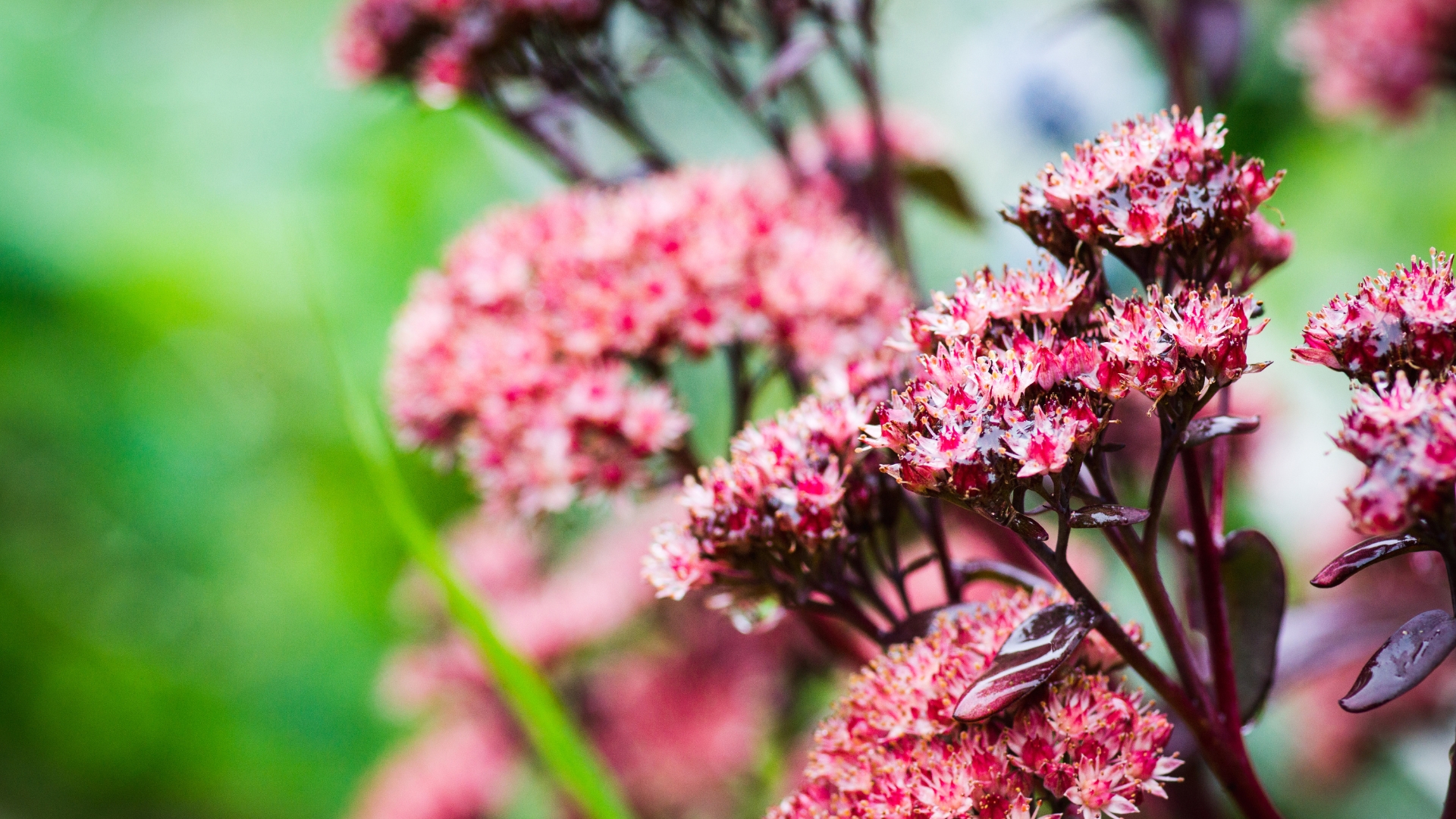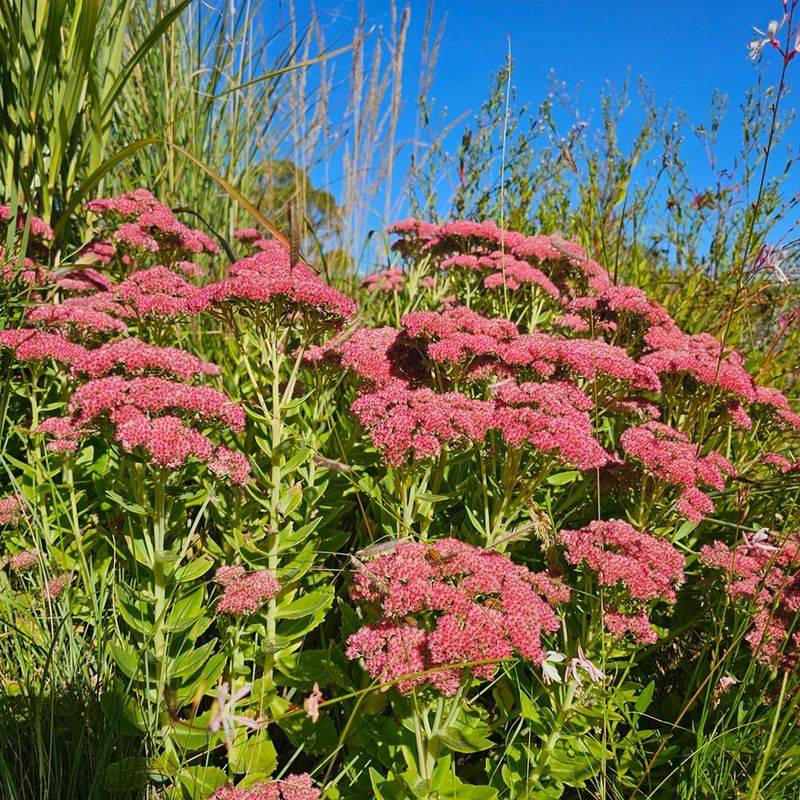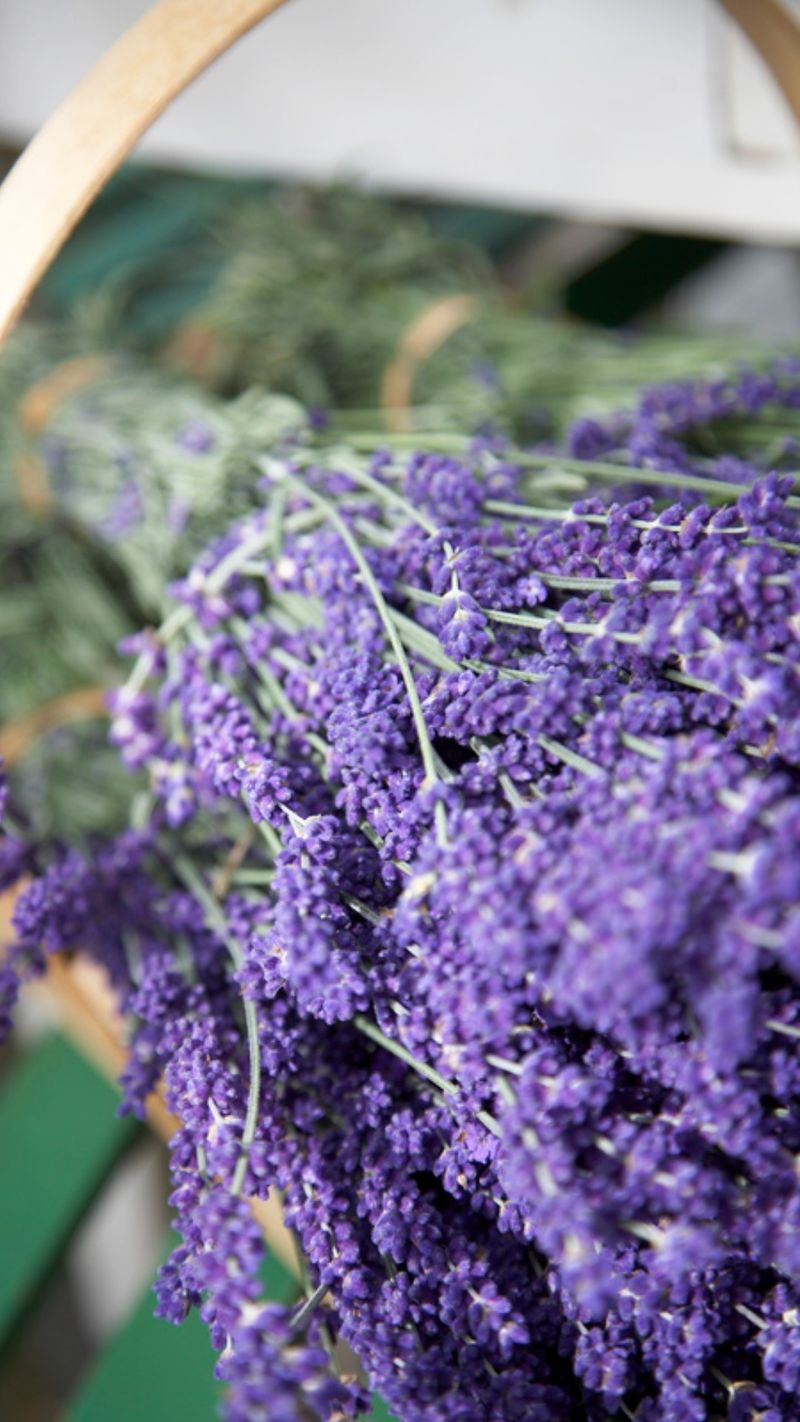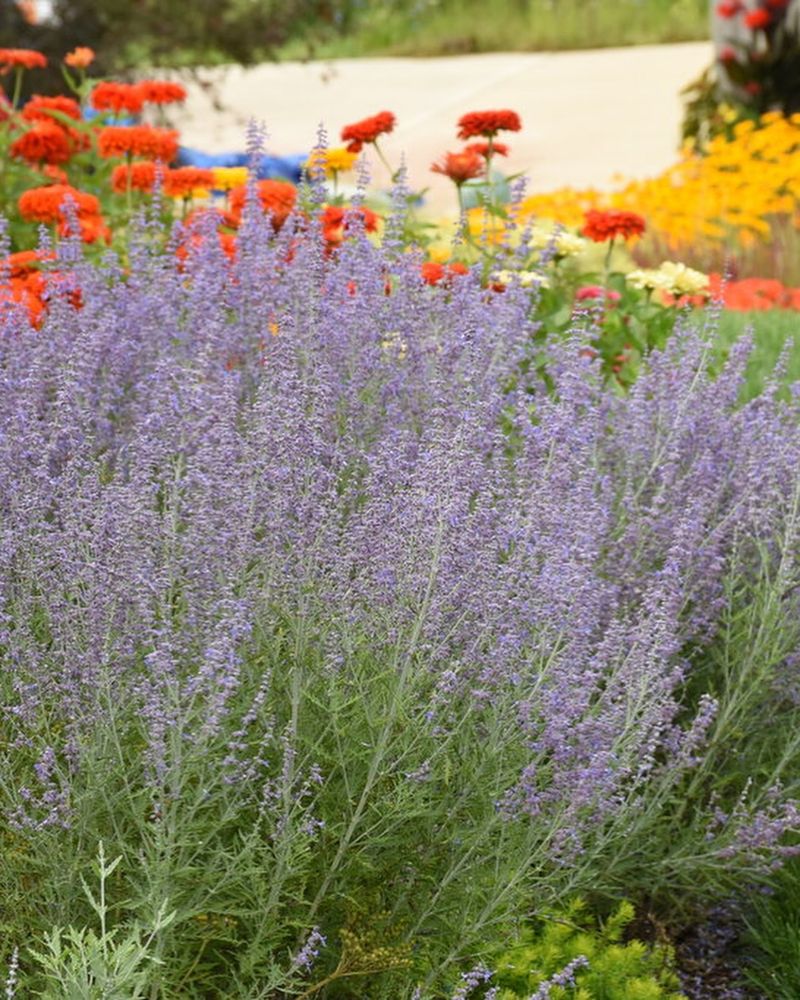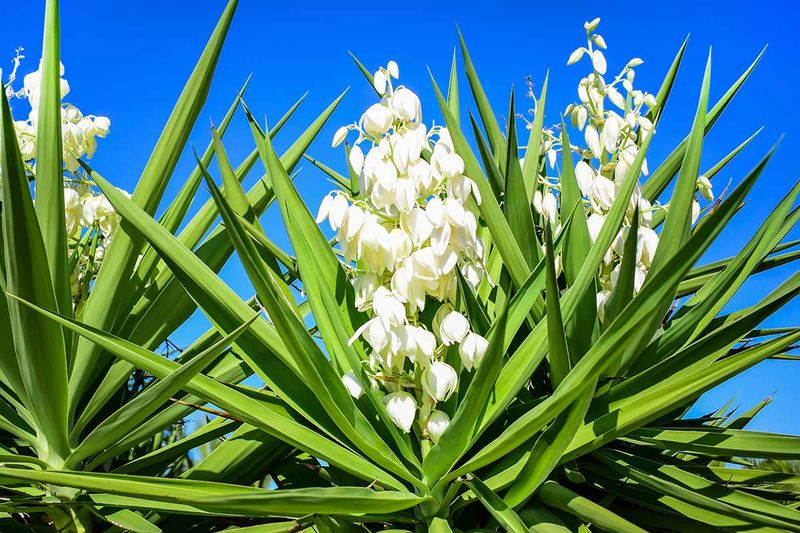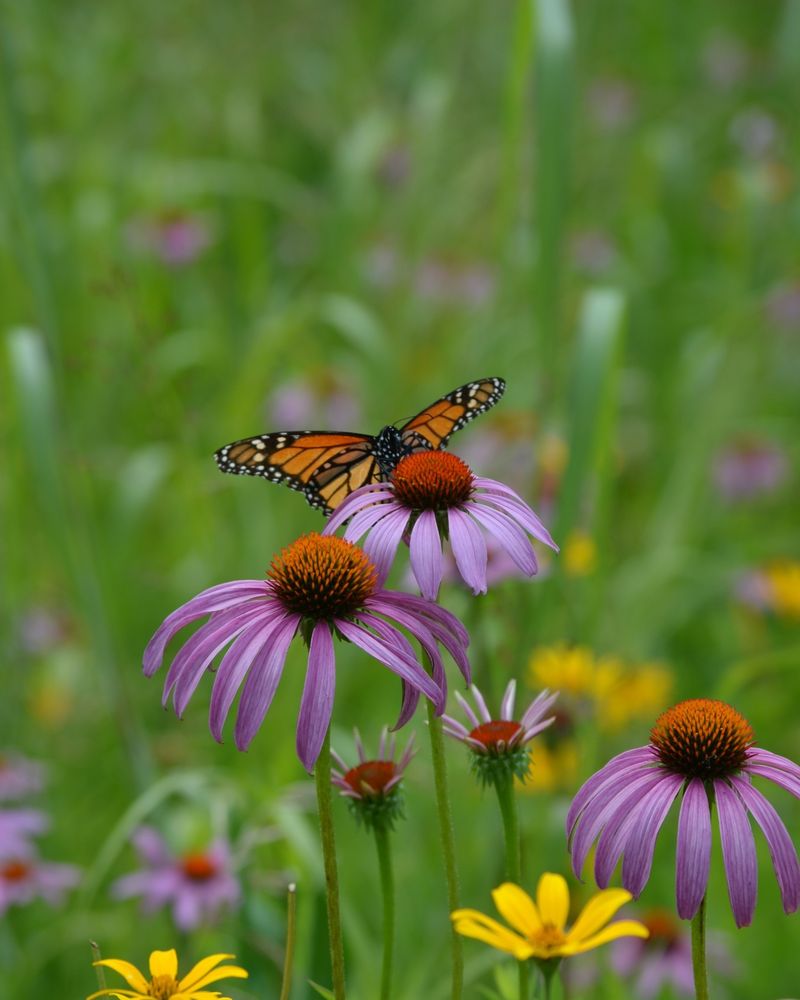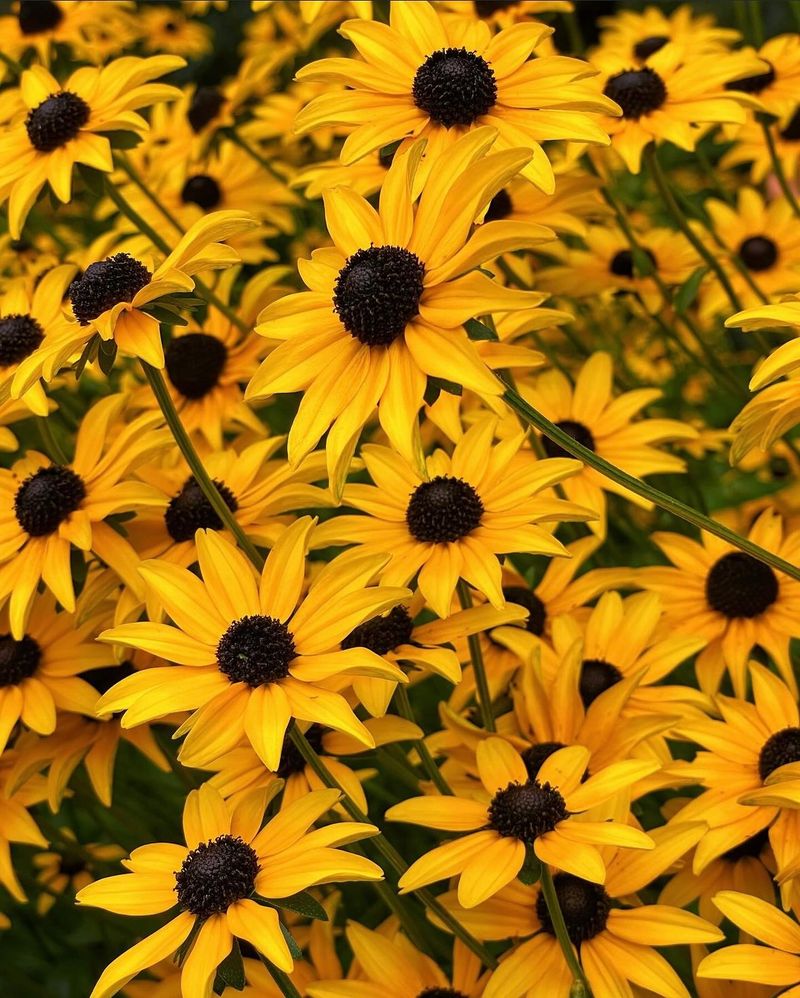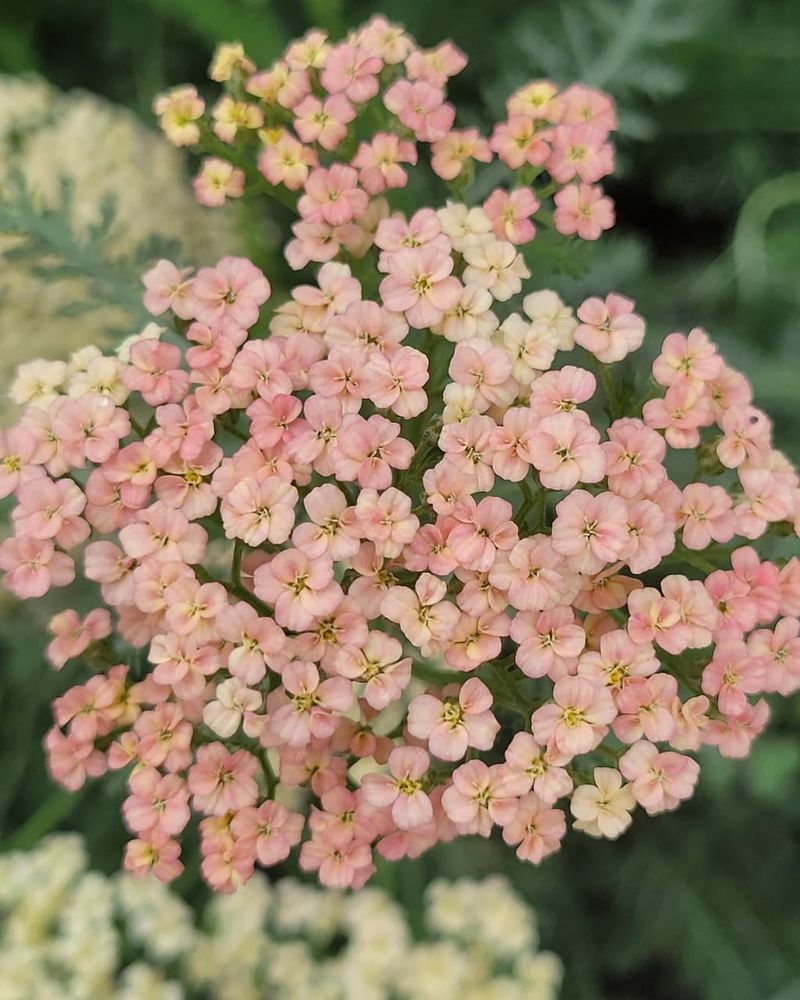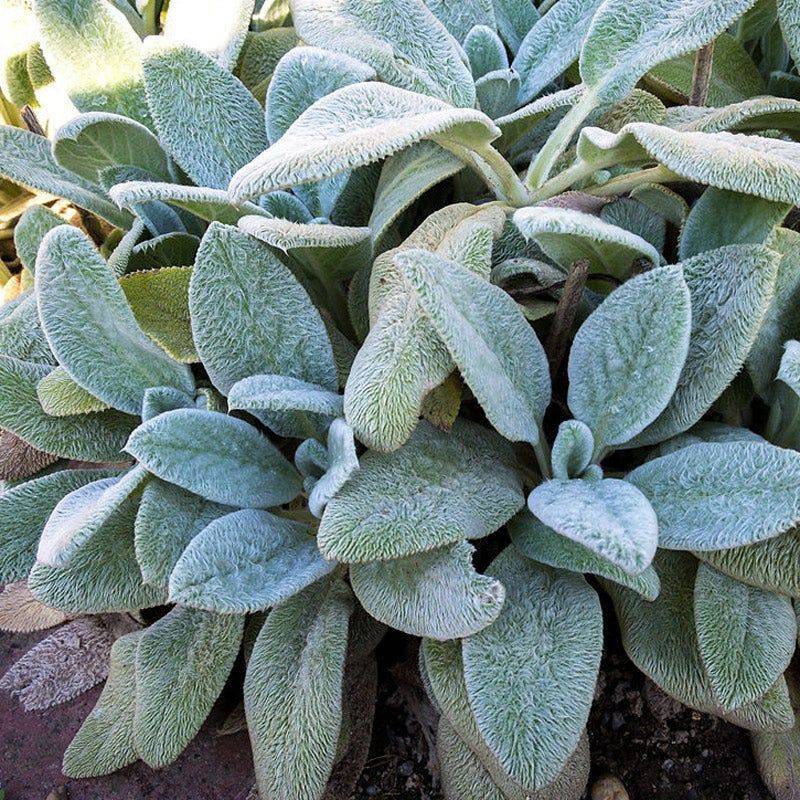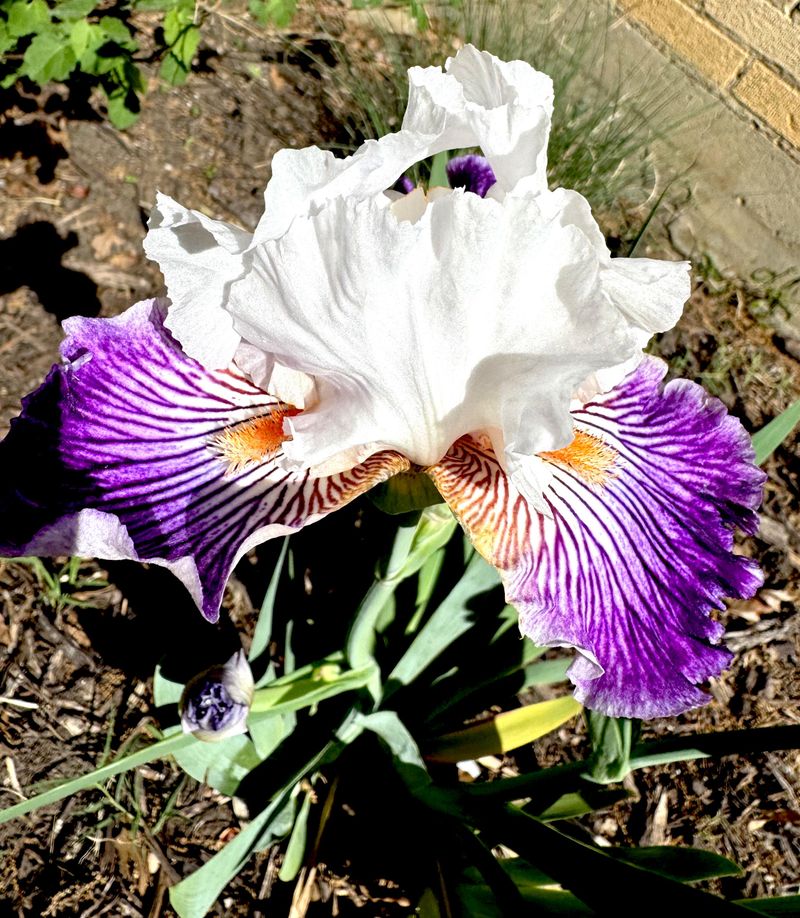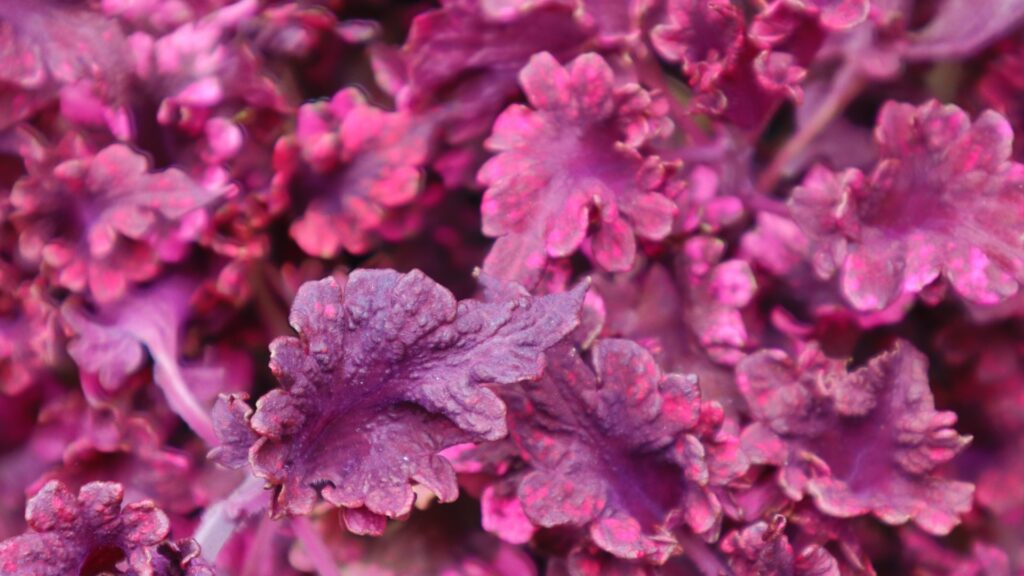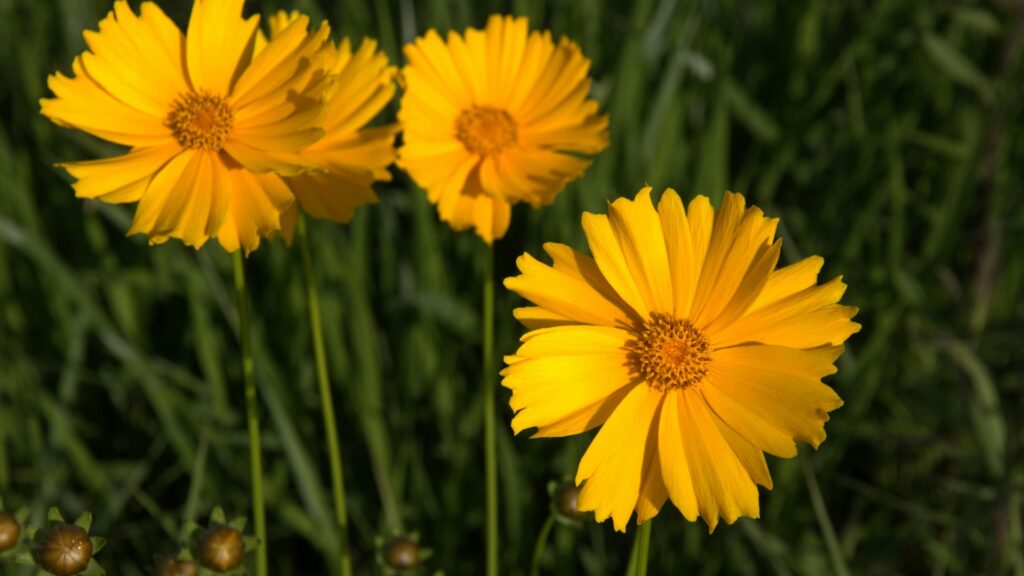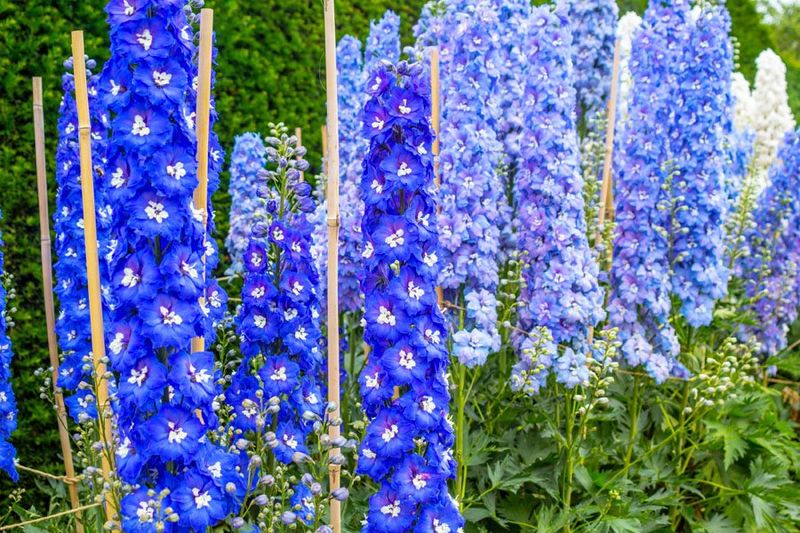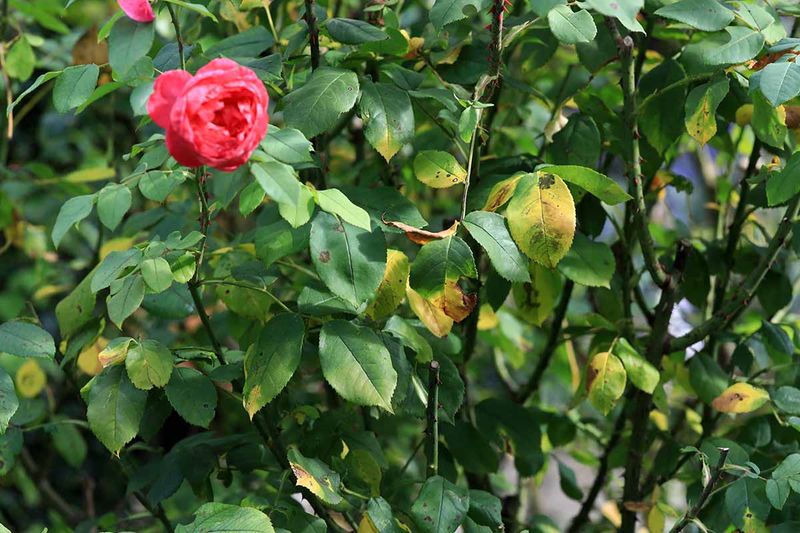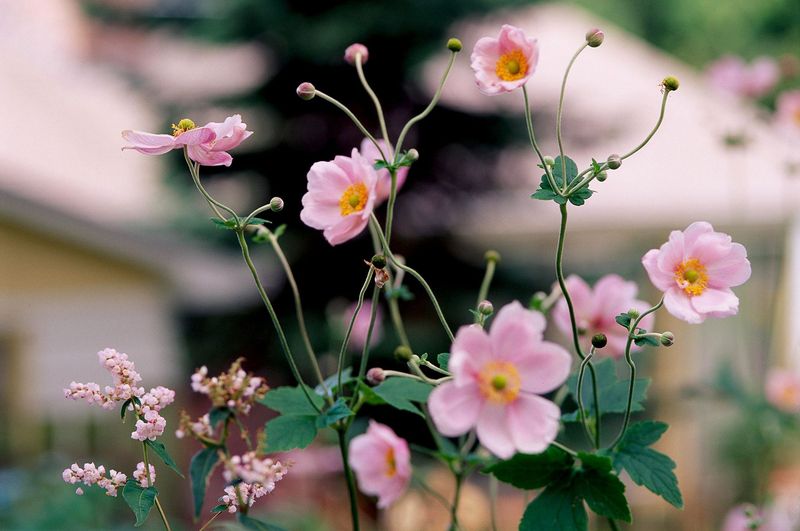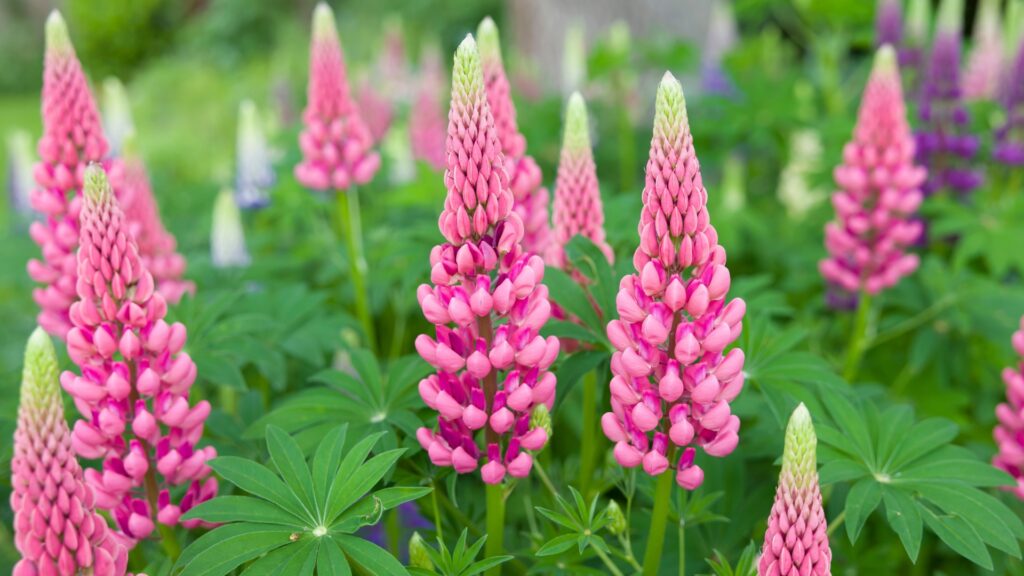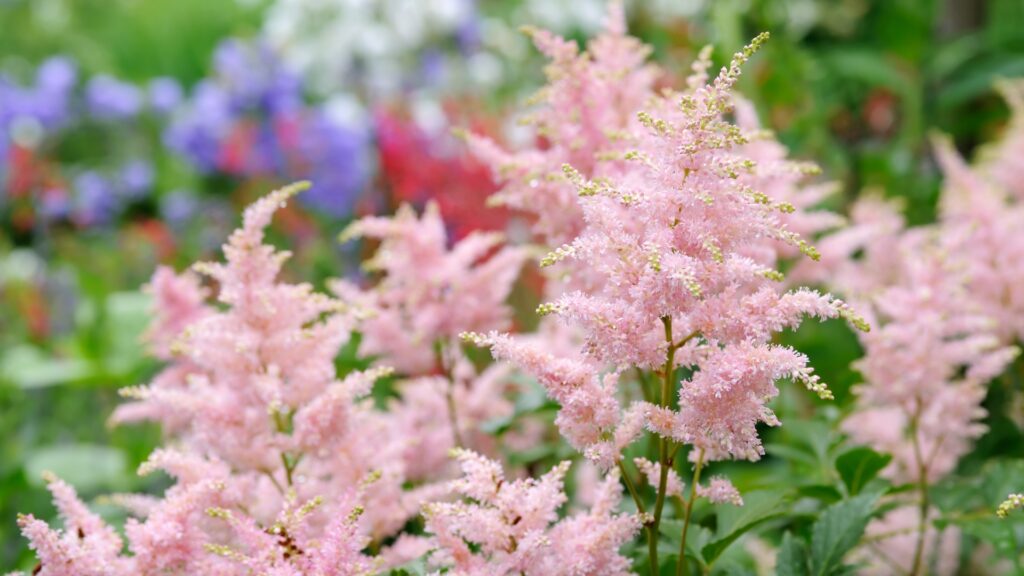Gardening doesn’t have to steal your weekends or tie you to a watering can. In fact, some of the showiest plants are downright independent—happiest when left to their own devices. If you’re short on time or simply tired of playing nursemaid to needy blooms, you’ll be glad to know there are perennials that truly earn their keep.
We’ve rounded up 15 ironclad beauties that thrive on a bit of tough love—and 5 high-maintenance heartbreakers that just aren’t worth the dirt they grow in.
1. Sedum (Stonecrop)
Drought-resistant and virtually indestructible, sedums store water in their thick, fleshy leaves. Their star-shaped flowers bloom in late summer, attracting butterflies and bees to your garden. Plant them in poor soil with good drainage and watch them thrive.
No need for fertilizer or regular watering – they actually prefer dry conditions once established. With dozens of varieties ranging from ground-hugging carpets to upright plants reaching two feet tall, there’s a sedum perfect for any lazy gardener’s landscape.
2. Lavender
Fragrant purple spikes rising above silvery foliage make lavender a standout in any garden. Native to Mediterranean regions, this aromatic herb craves sunshine and well-drained soil. Once established, lavender needs almost no care beyond an annual pruning.
Excessive watering is its enemy, making it perfect for forgetful gardeners. The essential oils that create its signature scent also naturally repel many garden pests. Harvest the blooms for sachets or cooking, or simply enjoy how they perfume the air on warm summer days.
3. Russian Sage
Clouds of tiny lavender-blue flowers hover above silvery stems, creating a dreamy effect from midsummer through fall. Russian sage laughs at drought, poor soil, and neglect while still putting on a spectacular show. Growing 3-5 feet tall and wide, this perennial makes a dramatic statement in the landscape.
Its aromatic foliage naturally deters deer and rabbits, giving you one less garden problem to worry about. Plant it once in a sunny spot with well-drained soil, then step back and enjoy years of carefree beauty.
4. Yucca
Sword-like leaves arranged in dramatic rosettes give yucca plants their distinctive appearance. Every few years, tall stalks erupt from the center, bearing striking white bell-shaped flowers. Native to hot, dry regions of the Americas, yuccas shrug off drought, heat, and poor soil conditions.
Their deep root system allows them to find water far below the surface, meaning you’ll rarely need to water established plants. For a bold architectural element in your landscape that requires virtually zero maintenance, yucca plants are hard to beat.
5. Coneflower (Echinacea)
Cheerful daisy-like blooms with raised centers bring butterflies and birds flocking to your garden. Native to American prairies, coneflowers evolved to handle harsh conditions and neglect with ease. After establishing their deep taproot during the first season, these hardy perennials become remarkably self-sufficient.
They’ll bloom for months without deadheading, though removing spent flowers can encourage more blooms. Leave the seedheads standing through winter to feed finches and other birds, adding interest to your garden even in the dormant season.
6. Daylily
Nicknamed “the perfect perennial,” daylilies earn this title through their incredible resilience. Each flower lasts just one day, but plants produce buds in succession for weeks of continuous color. Adaptable to almost any soil condition except standing water, daylilies form dense clumps that effectively crowd out weeds.
They’ll bloom reliably for years with zero care, though dividing overcrowded clumps every 4-5 years improves flowering. From bright yellows to deep purples, there’s a daylily variety to complement any garden palette.
7. Black-Eyed Susan (Rudbeckia)
Golden petals surrounding dark centers create a sunny presence in the garden from midsummer through fall. These native wildflowers bring a meadow-like charm to even the most neglected spaces. Rudbeckias thrive in average to poor soil and actually flower more prolifically without fertilizer.
Their drought tolerance is impressive once established, needing water only during extended dry periods. Self-seeding happily, black-eyed Susans will gradually spread to fill empty spaces in your garden, creating more beauty with absolutely no effort on your part.
8. Yarrow
Flat-topped flower clusters rise above feathery, aromatic foliage, creating an airy presence in the garden. Ancient yarrow varieties were primarily white, but modern cultivars offer shades from soft pastels to vibrant reds. Few plants match yarrow’s toughness – it thrives in hot, dry conditions where other perennials struggle.
Its deep roots access water far below the surface, making irrigation unnecessary in most climates. Beyond its ornamental value, yarrow has been used medicinally for centuries and attracts beneficial insects that help control garden pests naturally.
9. Ornamental Grasses
Graceful movement and year-round interest make ornamental grasses the unsung heroes of low-maintenance gardens. From compact blue fescue to towering miscanthus, there’s a grass for every garden spot. Most require nothing more than cutting back once yearly in late winter before new growth emerges.
Their extensive root systems make them exceptionally drought-tolerant once established. Many varieties develop beautiful seedheads that persist through winter, catching morning frost and low sunlight in ways that bring unexpected beauty to the dormant garden.
10. Catmint (Nepeta)
Clouds of lavender-blue flowers hover above aromatic gray-green foliage from late spring through fall. Unlike its cousin catnip, catmint’s more refined growth habit makes it perfect for garden borders. Remarkably drought-tolerant once established, catmint bounces back quickly from occasional shearing when blooms fade.
Its natural oils repel many problematic insects while attracting beneficial pollinators. Deer and rabbits typically avoid its minty scent, making catmint an excellent choice for gardens plagued by four-legged visitors.
11. Lamb’s Ear (Stachys)
Velvety silver leaves form low-growing rosettes that children and adults alike can’t resist touching. The soft, fuzzy texture comes from tiny hairs that reflect sunlight, helping the plant conserve water during dry spells. Lamb’s ear spreads slowly to form an attractive groundcover that suppresses weeds naturally.
In early summer, tall spikes of purple flowers emerge, though many gardeners remove them to focus on the foliage. Thriving in poor soil and hot, dry conditions, this perennial actually suffers more from excessive care than neglect.
12. Baptisia (False Indigo)
Lupine-like flower spikes emerge in late spring above blue-green foliage that resembles a small shrub. After flowering, interesting seed pods develop, rattling pleasantly in autumn breezes. Baptisia develops a deep taproot that makes it exceptionally drought-tolerant but also resistant to transplanting.
Choose its location carefully, as it can live for decades with zero maintenance. Native to American prairies, false indigo evolved to handle harsh conditions without human intervention, making it perfect for gardeners who prefer observation to constant care.
13. Bearded Iris
Ruffled blooms in nearly every color of the rainbow make bearded irises garden standouts in late spring. Their sword-like foliage provides structural interest even when the plants aren’t flowering. Growing from rhizomes that sit partially exposed at the soil surface, these classic perennials prefer to be left high and dry.
Excessive moisture or mulch touching the rhizomes can cause rot – one of the few ways to kill these hardy plants. Dividing overcrowded clumps every 3-4 years is their only maintenance requirement.
14. Coral Bells (Heuchera)
Low-growing mounds of scalloped foliage in shades ranging from lime green to deep burgundy make coral bells a reliable and colorful addition to any garden. While the dainty flower spikes attract hummingbirds, it’s the evergreen leaves that provide year-round interest and texture.
Thriving in partial shade and average soil, coral bells need only occasional watering during extended droughts. Most varieties are resistant to pests and diseases, and their compact growth habit means little to no pruning is required. Plant them once, then enjoy years of vibrant foliage with barely a second thought.
15. Coreopsis (Tickseed)
Bright, daisy-like flowers in sunny shades of yellow, pink, and red keep blooming from early summer through fall with minimal effort. Coreopsis thrives in poor, sandy soils and bakes happily in full sun, making it ideal for low-maintenance borders or wildflower-style plantings.
Deadheading spent blooms encourages even more flowers, though it’s not strictly necessary—this plant performs well regardless. Deer tend to avoid it, pollinators love it, and its airy form adds cheerful movement to garden beds. Once established, it’s drought-tolerant and nearly unstoppable.
16. DON’T BOTHER: Delphinium
Stunning blue spires make delphiniums tempting, but these prima donnas demand constant attention. Their hollow stems snap easily in wind and rain, requiring elaborate staking systems just to remain upright. Slugs and snails consider delphinium shoots gourmet fare, necessitating vigilant pest control.
Add their thirst for consistent moisture, hunger for rich soil, and susceptibility to powdery mildew, and you’ve got a high-maintenance nightmare. Even with perfect care, most delphiniums are short-lived, needing replacement every 2-3 years.
17. DON’T BOTHER: Hybrid Tea Roses
Perfect blooms in catalogs hide the reality of growing these demanding divas. Hybrid tea roses require spraying for black spot, powdery mildew, and rust – often on a weekly schedule throughout the growing season. Their sparse growth habit means even a few damaged leaves create unsightly gaps.
Regular deadheading, precise pruning, and winter protection add to their maintenance burden. For the time invested, consider easy-care landscape roses instead, which offer months of color without the constant attention hybrid teas demand.
18. DON’T BOTHER: Japanese Anemone
Late-season flowers make Japanese anemones seem like perfect perennials until you discover their invasive nature. What starts as a charming addition becomes a garden thug, sending runners far from the original plant. Removing unwanted shoots becomes a constant battle, as any root fragment left behind quickly grows into a new plant.
Despite their aggressive spread, established clumps paradoxically resent disturbance, sulking after division attempts. Their water demands during bloom time further complicate care, making these autumn beauties more trouble than they’re worth.
19. DON’T BOTHER: Lupine
Few flowers rival lupines in visual appeal, with their towering spires of pea-like blooms in jewel tones. But beneath the beauty lies a plant prone to disappointment. Lupines are famously fussy about soil – needing it slightly acidic, well-drained, and never too rich or too dry.
Their taproots make them difficult to transplant, and even small disturbances can cause them to sulk or die. Aphids and powdery mildew love them, and in warm climates, they tend to act like short-lived annuals. For a similar look with far less hassle, consider false indigo instead.
20. DON’T BOTHER: Astilbe
With their fluffy flower plumes and fern-like foliage, astilbes lure gardeners in with promises of elegance—but delivering that look takes constant babysitting. These thirsty plants wilt quickly in sun or dry conditions, requiring consistently moist, rich soil to stay healthy.
In many climates, this means daily watering or carefully monitored irrigation systems. They also need frequent division and protection from summer heat, pests, and root rot. Unless you’re gardening in a cool, shaded woodland setting with perfect soil, astilbes are more stress than they’re worth.

